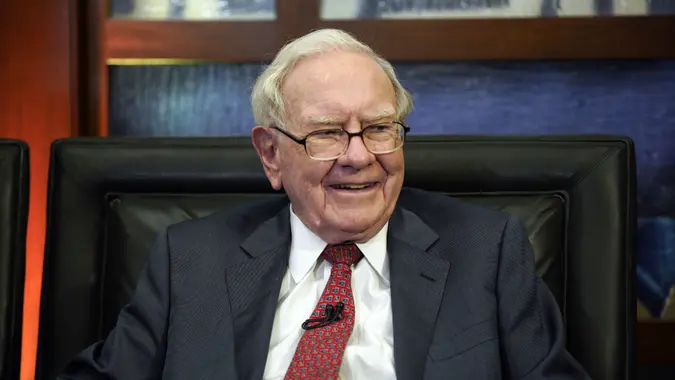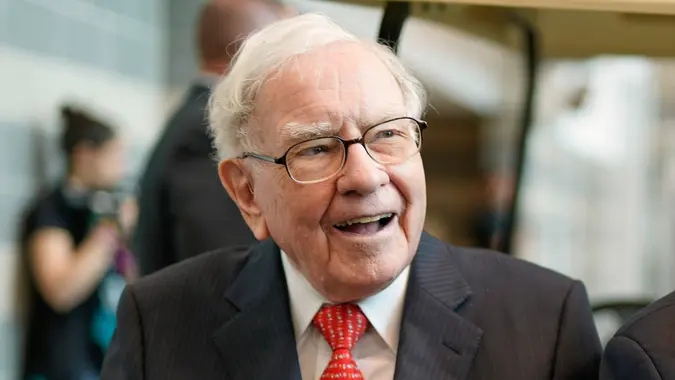How Much You Need To Invest Monthly To Reach $1 Million in 30 Years

Commitment to Our Readers
GOBankingRates' editorial team is committed to bringing you unbiased reviews and information. We use data-driven methodologies to evaluate financial products and services - our reviews and ratings are not influenced by advertisers. You can read more about our editorial guidelines and our products and services review methodology.

20 Years
Helping You Live Richer

Reviewed
by Experts

Trusted by
Millions of Readers
Becoming a millionaire may sound like a stretch, but with enough time and consistency, it’s a surprisingly achievable goal.
If you want to have $1 million saved 30 years from now, the key is starting early, investing regularly and aiming for reasonable returns over time. Here’s what the numbers look like.
The Power of Time and Compounding
You don’t need to win the lottery to reach $1 million in savings over 30 years, you simply need to leverage the power of compound interest. This is where your money earns interest and that interest earns more interest over time.
If you invest $1,000 per month for 30 years and earn a 6% annual return, you’ll end up with just over $1 million, according to SmartAsset. But if you earn a higher return, say 8%, you’ll reach that same goal with only $700 per month.
Monthly Investment Targets by Return Rate
| Annual Return | Monthly Investment Needed (30 Years) |
| 6% | $1,000 |
| 7% | $850 |
| 8% | $700 |
| 9% | $570 |
| 10% | $440 |
These calculations assume no initial investment and consistent monthly contributions for 30 years.
What the Experts Recommend
Fidelity Investments, one of the largest and most well-known financial services companies in the world, recommends saving 15% of your pre-tax income annually, including any employer match, throughout your working years. This aligns with the idea of replacing at least 45% of your pre-retirement income with savings, the rest would come from Social Security or pensions.
For example, if you earn $70,000 per year, 15% savings equals about $875 per month more than enough to get you to $1 million if invested properly.
Smart Strategies To Maximize Growth
To reach $1 million in 30 years, you don’t just need to save, you need to invest wisely. That means:
- Starting early: The earlier you begin, the less you need to invest each month.
- Taking advantage of tax-advantaged accounts like IRAs and 401(k)s.
- Investing in a diversified portfolio that includes a mix of stocks and bonds.
- Staying invested, even during market downturns, time in the market beats timing the market.
How Much Can You Safely Withdraw in Retirement?
The 4% rule is a classic retirement guideline: Withdraw 4% of your savings in the first year, then adjust for inflation annually. For example, with $1 million saved, that’s $40,000 in year one. It’s designed to help your money last about 30 years.
But according to experts at Charles Schwab, the 4% rule is just a starting point. It assumes a fixed portfolio (50% stocks, 50% bonds), a 30-year retirement and no spending flexibility, which may not reflect your situation.
Instead, they recommend a personalized approach. For a 30-year retirement, a moderate portfolio could support a withdrawal rate between 4.2% and 4.8%, depending on your confidence level. Shorter time horizons allow for higher rates, up to 6% or more for 20 years.
The key? Stay flexible. Review your plan annually, adjust for market changes and consider all income sources like Social Security or pensions. Retirement isn’t one size fits all and your withdrawal strategy shouldn’t be either.
Key Takeaways
If you start today, reaching $1 million in 30 years is within reach but it requires a plan. With consistent monthly contributions of $500 to $1,000, depending on your expected return, you can grow a seven-figure portfolio over time. And by following proven strategies, such as saving around 15% of your income and adopting smart withdrawal rates, you can turn that million into lasting retirement security.
 Written by
Written by  Edited by
Edited by 

























